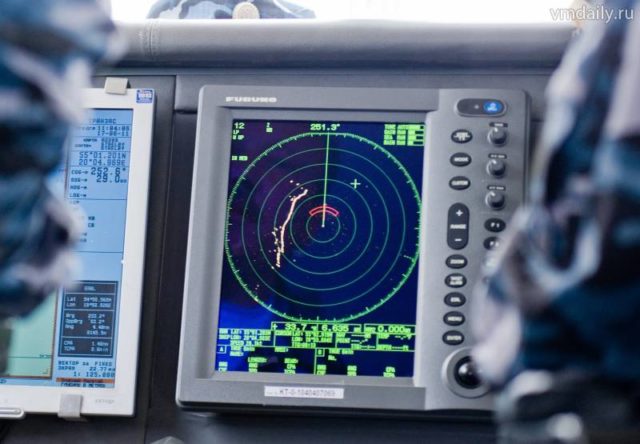
Lithuanian-Russian Radio Frequency Dispute Highlights Problems of Civilian Versus Military Applications
Publication: Eurasia Daily Monitor Volume: 18 Issue: 38
By:

The ongoing expansion of wireless internet connectivity around the world has concurrently raised a host of unresolved issues about cyberspace, including access, conductivity, taxation and cyberwar, as states attempt to secure their digital frontier while boosting their influence against competitors. And cutting-edge technology innovation is, naturally, instrumental in gaining this dominance. Nowhere is this more obvious than in radio wireless connections, where 5G (fifth-generation wireless) is up to 100 times faster than current 4G cellular networks. On the North Atlantic Treaty Organization’s (NATO) eastern frontier, Lithuania is disputing the Russian military’s use of the 3.5 gigahertz (GHz) radio frequency band, which Lithuania requires to be able to introduce its 5G network. Russia had reserved the frequency for military radars located in its 5,800-square-mile Kaliningrad Oblast—a Baltic littoral exclave completely isolated from the rest of Russia by NATO members Lithuania and Poland. Bilateral negotiations to resolve the impasse are presently stalled (LRT, February 23).
The first generation of wireless cellular technology (1G) was introduced in 1979 and utilized the 800 megahertz (MHz) spectrum. The fifth generation of wireless cellular technology, 5G, operates or is planned to operate across a wide range of spectrum bands, including 600 MHz, 2.5 GHz, 3.4–3.8 GHz, 28 GHz and 39 GHz. In 2019, initial 5G service began in many countries, with widespread availability expected by 2025.
A key advantage of 5G is the fast response time (“latency”)—the time taken for devices to respond to each other over the wireless network. 3G networks had a typical response time of 100 milliseconds, which dropped to around 30 milliseconds when 4G was introduced. The latency period for 5G will be as low as a millisecond, allowing for virtually instantaneous signaling and, thus, opening up of a new reality of connected applications. In both financial and military arenas, where speed can confer a critical advantage, the benefits of a well-integrated national 5G network are obvious.
Lithuanian complaints about the trans-border effects of Russian military radars in Kaliningrad Oblast on the Lithuanian 5G network are surely not motivated solely by civilian considerations as, in fact, the trans-border interference is heavily mitigated in range by the physics involved. For 4/5G wireless communications and network deployments, the higher the frequency, the smaller the coverage area, but the higher the speed. Transmissions of 600–700 MHz have a range of up to a hundred square kilometers and an upper limit transmission speed of roughly 250 Megabits per second (Mbps). Whereas, with the higher 2.5–3.5 GHz radio frequencies, while speeds dramatically increase up to 800–900 Mbps, coverage drops to only several square kilometers, necessitating a virtual forest of antennas (T.me/mobilereviewcom, February 8). Any Russian military radar radio frequency pollution from Kaliningrad spilling across the border into Lithuania would accordingly be extremely limited. That said, the Lithuanian towns of Kybartai, Kudirkos Naumiestis, Panoviai, Šilgaliai, Slavikai, and Smalininkai (with a combined population of roughly 8,900) are all located directly on the border with the Russian exclave.
Russia’s refusal to shift away from using the 3.5 GHz radio band for military purposes indicates that the country plans to run its 5G network on a different radio frequency band or bands, compared to most of Europe and parts of Asia, which have largely settled on the 3.4–3.8 GHz range. This decision by Moscow will make 3.5 GHz less of a prospective global band as the technology becomes more prevalent (Lightreading.com, November 19, 2020).
As for why Russia is upgrading Kaliningrad’s air-defense systems, five months ago the National Defense Control Center of the Russian Federation reported, “On September 25, 2020, Russian airspace control over the neutral waters of the Baltic Sea detected two United States Air Force B-52H strategic bombers approaching the state border of the Russian Federation” (RIA Novosti, September 25, 2020). From the Baltic, the bomber pair overflew the Suwałki Corridor (a 100-kilometer-wide strip of land between Kaliningrad and Belarus that links Poland and Lithuania) before turning north, passing near Sweden and then returning to the United Kingdom, effectively flying a circle around Kaliningrad (Twitter.com/nukestrat, September 25, 2020). More recently, the Russian press blared that US defense contractor Lockheed Martin had been awarded a Pentagon contract to construct 400 more AGM-158B Joint Air-to-Surface Standoff Missile–Extended Range (JASSM-ER) “stealth cruise missiles that are capable of reaching Siberia” (Izvestia, February 27, 2021).
For the moment the Russian-Lithuanian radio-frequency spectrum standoff continues unabated. On February 22, Lithuania’s Communications Regulatory Service (SRS) announced in the parliament that while the Russian government had agreed to remove domestic television programs from the 700 MHz range, Moscow refused to relent on releasing the 3.5 GHz radio-frequency band. According to SRS Deputy Director Mindaugas Zhilinskas, “We are not presently negotiating with Russia directly. We have raised this issue at the highest level possible in the ITU [International Telecommunications Union—the United Nations division that coordinates the interaction of participants in the global communications market]. It will be presented at a conference of commissioners in 2022, and in 2023 it will be moved to the World Radio Confederation” (Yandex.ru, February 23, 2021).
The Lithuanian-Russian dispute over apportionment of the electromagnetic spectrum is ultimately a dual-use technological conflict between military and civilian applications—security versus commerce. Kaliningrad Oblast, which hosts the headquarters of the Russian navy’s Baltic Fleet, is completely surrounded to the north and east by Lithuania and to the south by fellow NATO member Poland. Therefore, the exclave’s vulnerability and strategic importance means the Russian government will surely continue to favor military considerations over economic or diplomatic ones when it comes to any issues impacting this region.



